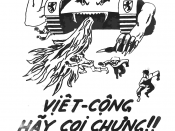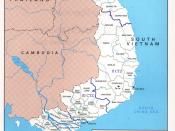The story of US intervention in South Vietnam's internal affairs is a story of failure after failure to establish a viable South Vietnamese state. Seeking to control perceived communist expansion and to destroy the eventual communist insurgency in South Vietnam, the US attempted to create a political alternative to the popular communist regime in the North. In doing so, the US was fighting an uphill battle, a battle it was neither able nor equipped to win. In this effort to keep alive its hopes of producing a workable, independent South Vietnam, the US government consistently deceived both itself and its citizens. In early 1968, in what has now popularly known as the "Tet Offensive" (Tet-68), communist forces staged a massive attack on US and ARVN (Army of the Republic of Vietnam) forces. Documents written after Tet-68 strikingly show the failure of nation-building, and the documents point to many of the basic reasons for that failure.
Ultimately, it was Tet-68 which brought to the forefront the lies and reality of the US' efforts, and it was this realization that would prove to be the turning point of America's involvement in Vietnam.
The stark truth about Vietnam is that it was, and continues to be, one nation and one people. But both the US and France were unable to grasp this fundamental reality, a reality that was grounded in Vietnam's strongly nationalistic culture and its two thousand year history of fiercely resisting outside intervention. As early as the last 1940's, the French were attempting to create a strong and cohesive alternative to the Vietminh that would "provide a rallying point for non-Communist Vietnamese nationalists," and that could "create a serious alternative to the Vietminh Front for the loyalty of the Vietnamese people." This new government, led by the onetime playboy-prince...


